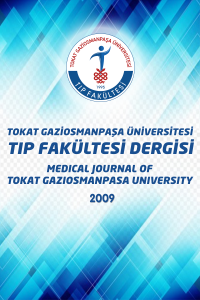Elektif Sezaryen Ameliyatlarında Anestezi Yönetimi: Retrospektif Değerlendirme
spinal anestezi, hipotansiyon, efedrin
Anaesthesia Management in Elective Caeserean Section Operation: Retrospective Evaluation
Anesthesia spinal, hypotension, ephedrine,
- ISSN: 1309-3320
- Başlangıç: 2009
- Yayıncı: Tokat Gaziosmanpaşa Üniversitesi
Orofarengeal Tularemi’de Streptomisin Tedavisinin Odyolojik Monitörizasyonu
Levent GÜRBÜZLER, Sema KOÇ, İbrahim ALADAĞ, Harun SOYALIÇ, Ceyhun AKSAKAL, Göksel GÖKTAŞ
Nijerya Kökenli Plasmodium Falciparum Sıtması
Özgür ENGİNYURT, Yeliz ÇETİNKOL, Fazilet ÖZENÇ
Özgür GÜNAL, Şener BARUT, Ayfer ATAY, Fikret ERDEMİR, Doğan ATILĞAN, Engin KÖLÜKÇÜ
Elektif Sezaryen Ameliyatlarında Anestezi Yönetimi: Retrospektif Değerlendirme
Ziya KAYA, Semih ARICI, Serkan KARAMAN, Serkan DOĞRU, Mustafa SÜREN, Mürsel KAHVECİ
Lomber Cerrahi Sonrası Görülen Orta Serebral Arter Enfarktı
Kardiyopulmoner Resüsistasyonda İlaç Kullanımı
Hayri ELİÇABUK, Mustafa SERİNKEN
Kaan YERLİYURT, Dilek NALBANT, Semra KUŞTİMUR
Retinal Ven Oklüzyonu Olan ve Olmayan Hastalarda Serum Eser Element Düzeyinin Karşılaştırılması
Hüseyin ORTAK, Selim DEMİR, Durali MENDİL
Spinal Kord Basısı ile Prezente Olan Kolorektal Kanser:
Hakan ŞIVGIN, Mehmet KILINÇ, Banu ÖZTÜRK, Erkan GÖKÇE, Abdulkerim YILMAZ, Mustafa BARUT, Mustafa SAĞCAN, Yeliz BİLİR
